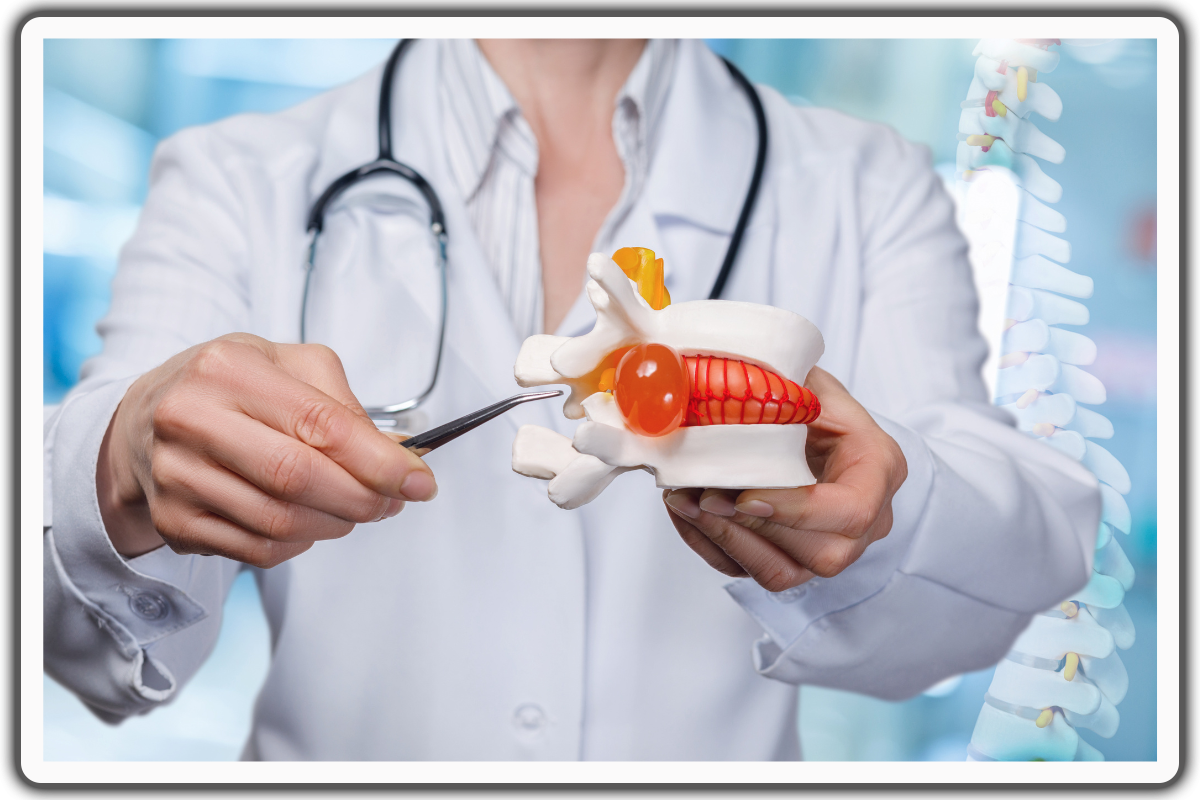
Herniated Disc Pain Relief: Practical Strategies for Back Comfort
Embarking on the journey of herniated disc pain relief involves addressing challenges and overcoming interruptions caused by back discomfort. Daily activities can be hindered, affecting everything from work to personal life. In this guide, we delve into practical strategies that alleviate the pain like herniated disc exercises and restore seamless engagement in routine activities.
From adjusting lifestyle habits to incorporating targeted exercises, discover effective ways to manage and reduce the impact of herniated disc pain on your daily life. Regain control over interrupted activities and embrace a path towards lasting comfort and well-being.
Disc Herniation, commonly called a "slipped disc," transpires when the inner soft part of the disc protrudes or deviates from its usual oval shape.
Over time, the disc may undergo alterations, leading to a protrusion or displacement of a section of its oval structure. While some individuals undergo disc protrusion or herniation without apparent symptoms like back pain or nerve pain, a small percentage grapple with challenges.
In these cases, the protrusion applies pressure, impacting the spinal nerves, including the spinal cord, resulting in back or nerve pain. This intricate scenario may give rise to manifestations such as neck pain, leg pain, and muscle spasms.
Hence, a thorough grasp of the elements influencing symptom manifestation is essential in relieving herniated disc pain.
What Causes Disc Herniation?
- Age-related Degeneration - The inherent progression of aging may result in deterioration and strain on spinal discs, causing them to lose their flexibility and resilience. This makes them more prone to herniation.
- Injury or Trauma - Sudden injuries or trauma, such as a fall or a blow to the spine, can force the disc material to protrude or herniate.
- Improper Lifting Technique - Incorrect lifting techniques, especially when lifting heavy objects, can strain the spine and contribute to disc herniation.
- Genetic Factors - There may be a genetic predisposition to disc problems, including herniation. Individuals with a family history of disc issues may be more susceptible.
Repetitive Strain or Overuse - Engaging in activities that involve repetitive motion or strain on the spine, especially without proper body mechanics, can contribute to disc herniation over time.
Tips to Lower the Risk of Disc Herniation

Maintain Good Posture
Practice proper posture, whether sitting, standing, or lifting. This helps distribute weight evenly across the spine, reducing the risk of excessive pressure on the discs.
Regular Exercise
Strengthening the core muscles and maintaining overall flexibility through regular exercise can provide better support to the spine, reducing the likelihood of disc herniation.
Lift Properly
When lifting objects, use your legs rather than your back. Bend your knees, keep the object close to your body, and avoid twisting while lifting.
Staying Active and Avoid Prolonged Sitting
Incorporate regular breaks and movement into your day, especially if you have a sedentary job. Prolonged sitting can contribute to disc issues, so take short walks or stretch periodically.
Weight Management
Maintain a healthy weight to reduce unnecessary stress on the spine. Excess body weight, especially around the midsection, can strain the lower back and increase the risk of disc herniation.
Physical Therapy
Consider incorporating physical therapy into your routine, especially if you have a history of back issues or are at risk of disc herniation. A physical therapist can offer specific exercises and guidance to strengthen the core, improve flexibility, and promote overall spinal health, lowering the risk of disc-related problems.
Ways for Immediate Herniated Disc Pain Relief
Pain Medication
Non-prescription pain relievers like ibuprofen or acetaminophen can offer immediate relief from lumbar herniated disc pain by reducing inflammation and alleviating discomfort.
Muscle Relaxants
Prescribed muscle relaxants can help ease muscle spasms associated with herniated disc pain, providing prompt relief and improving overall comfort.
Hot or Cold Therapy
A hot or cold compress on the impacted area can quickly relieve mild herniated disc pain. Cold packs effectively reduce inflammation, whereas heat can relax muscles and soothe discomfort.
Spinal Nerve Decompression Exercises
Engaging in gentle exercises that decompress the spinal nerves can provide immediate relief from pain associated with a herniated disc. These exercises aim to alleviate pressure on the affected nerves, reducing pain.
Positional Changes
Adjusting your posture or lying down in a specific position that reduces pressure on the lumbar spine can offer quick relief. Experiment with different positions to find the one that provides the most comfort and pain relief for your specific condition.
5 Exercises to Relieve Herniated Disc Pain
1. Belly Breathing
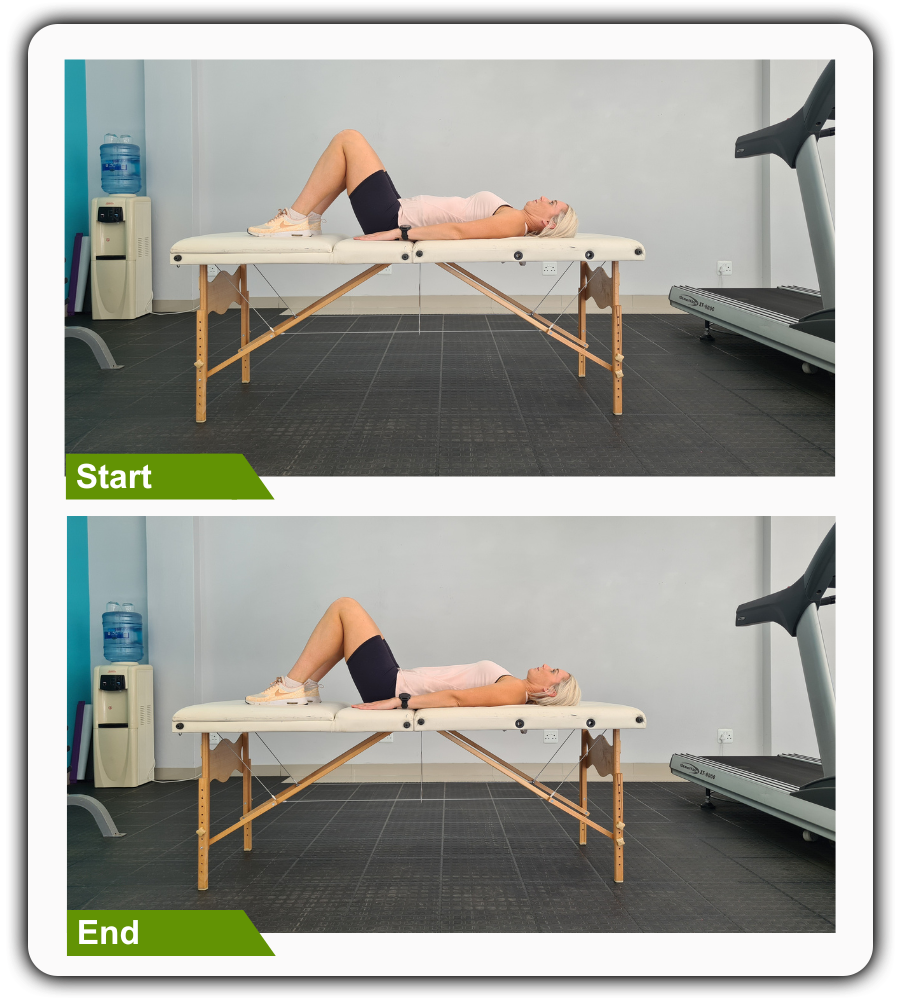
Belly Breathing
Lie on your back with your knees bent and feet flat, relaxing your neck and upper body. Place your hands at your sides. Inhale by filling your stomach with air. Exhale by breathing out any tension in the muscles around your upper body and lower back. Repeat the movement. Start with 1 set of 5 repetitions.
Perform this exercise in smooth, controlled breathing. The intensity is light.
The purpose of this exercise is to relieve back pain from herniated discs and decrease the stress and muscle tension in the back.
2. Abdominal Activation
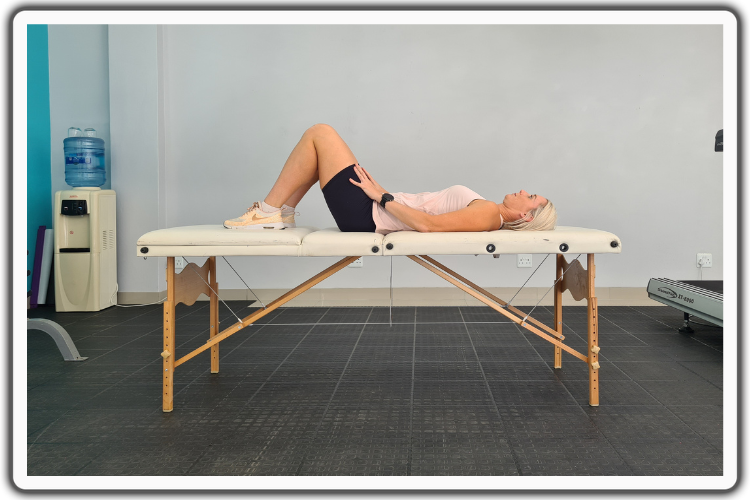
Abdominal Activation
Lie on your back with your knees bent and feet flat, relaxing your neck and upper body. Place your hands at your sides. Contract your abdominal area and hold the position for 2-10 seconds. Relax your core and repeat the movement. Start with 1 set of 5 repetitions, ideally for 2-10 seconds.
Perform this exercise in a smooth, controlled movement with a good hold at the end position. The intensity is light.
This exercise aims to relieve pain from a herniated disc, improving activation, endurance, and strength.
3. Cobra Pose
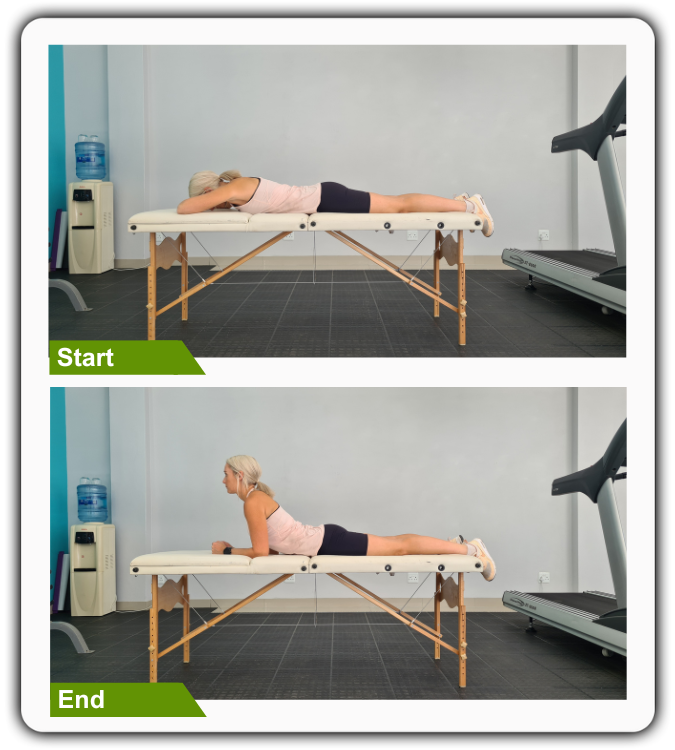
Cobra Pose
Lie on your stomach with your feet shoulder-width apart and maintain good alignment with your head, shoulders, hips, and legs. Rest your forehead on your hands. Contract your core, arch your back, and raise your upper body using your forearms. Hold the position for a couple of seconds. Return to the starting position and repeat the movement. Start with 1 set of 5 repetitions.
Perform this exercise in a smooth, controlled movement with a good hold at the end position. The intensity is light.
This exercise aims to counteract disc herniation and help with mobility and movement in the low back area.
4. Upward-Facing Dog
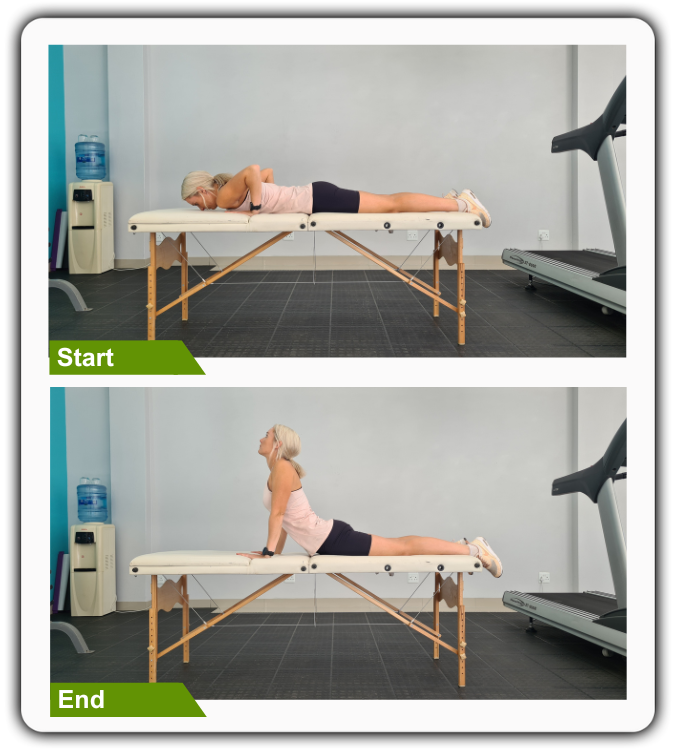
Upward Facing Dog
Lie on your stomach with your feet shoulder-width apart and maintain good alignment with your head, shoulders, hips, and legs. Place your hands at your sides at chest level. Tighten your abdominal muscles. Straighten your arms and arch through your back to stretch your hips and lower back area. Lift your chin towards the ceiling and contract through your legs, ensuring your knees and hips remain firmly pressed down. Return to the starting position and repeat the movement. Start with 1 set of 5 repetitions.
Perform this exercise in a smooth, controlled movement with a good stop at the end position. The intensity is light.
This exercise aims to counteract disc herniation and help with mobility and movement in the lower back, pelvis, and mid-back area.
5. Back Bend
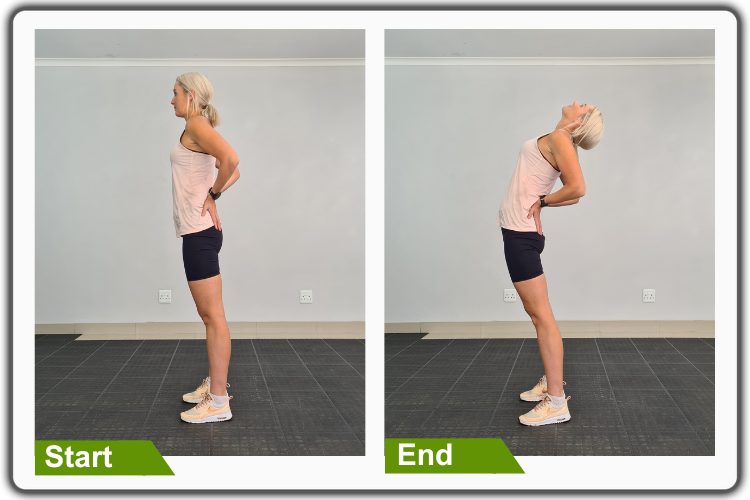
Back Bend
Begin in an upright standing position with your feet shoulder-width apart, maintaining good alignment with your head, shoulders, hips, and legs. Place your hands on your lower back or upper pelvis area. Engage your core. Arch your back, focusing on the movement in your lower back area. Return back to the starting position and repeat the exercise. Start with 1 set of 5 repetitions.
Perform this exercise in a smooth, controlled movement with a good stop at the end position. The intensity is light.
This exercise aims to counteract disc herniation and help with mobility and movement in the spine, pelvis, and mid-back area.
Take Away
Many individuals dealing with disc herniation might require extensive back exercises, yet they require assistance determining the most effective workout regimen for their condition.
They could experiment with various activities like lifting weights, running, squats, and crunches. Although these workouts might improve your fitness and well-being, there might be more effective methods to address your herniated disc.
Exercising with a bulging or herniated disc requires caution to prevent exacerbating pain. A careful selection of exercises is essential for maximizing the benefits of your workout without compromising your spinal condition.
To optimize your exercise routine while safeguarding against worsening disc pain, consider incorporating the specific exercises we discussed earlier. These exercises address herniated disc issues by promoting spinal health, reducing nerve pressure, and minimizing the risk of further injury.
To alleviate back pain caused by herniated discs, engaging in exercises tailored to your specific type of back pain is advisable, focusing on correctly strengthening muscles and promoting relaxation. Regardless of the nature of your back pain, refrain from commencing exercise right away. Begin with brief activity sessions and gradually progress to more strenuous exercises as you build tolerance.
